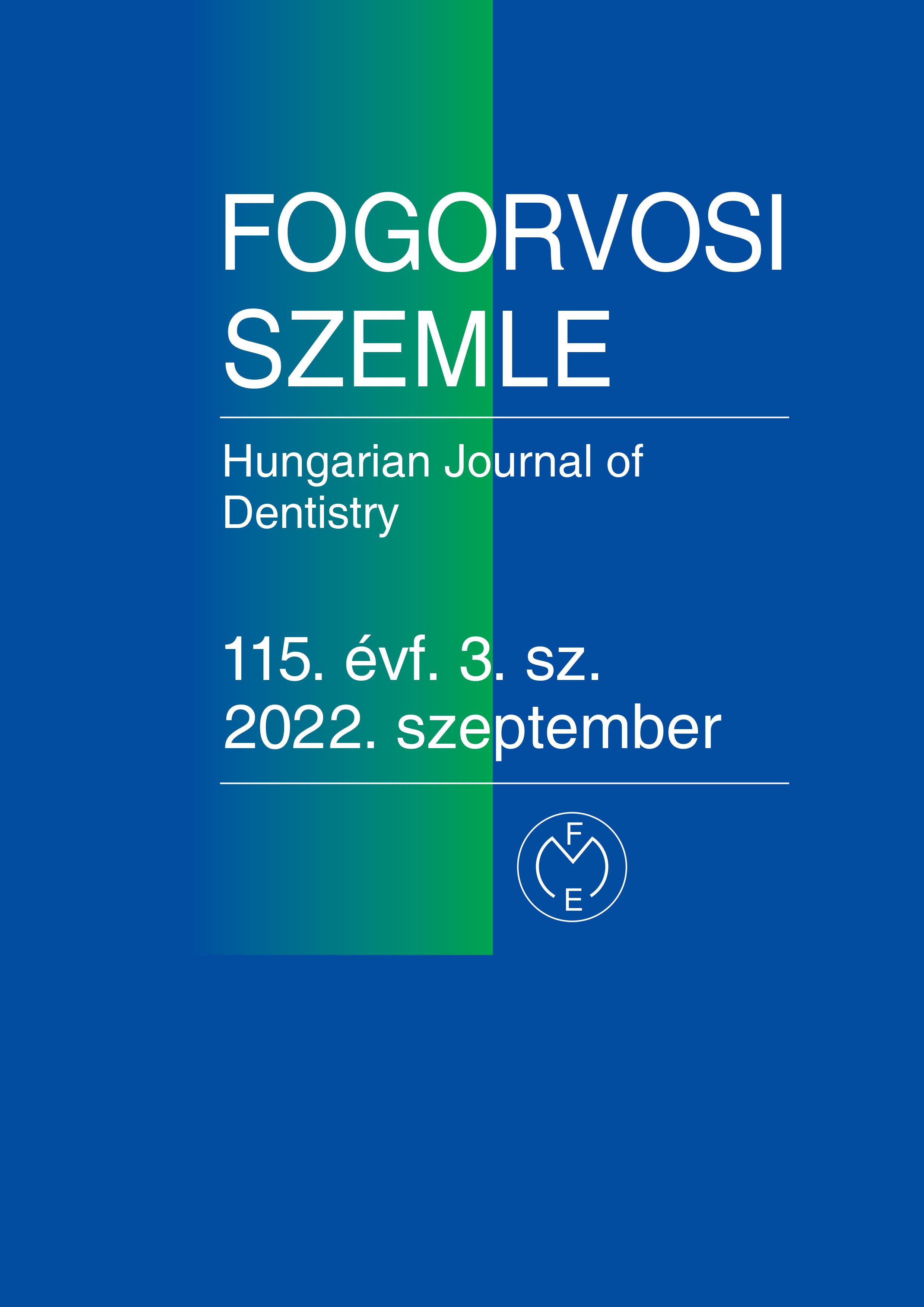Prosthetic rehabilitation of siblings with oligodontia and metal allergy
Abstract
Oligodontia is a complex congenital deformity, as it includes the lack of permanent teeth, functional and psychosocial
problems. The management of this deformity requires a multidisciplinary approach, that involves the work of an orthodontist,
gnatologist, and a prosthetic specialist. In the following casereport the comprehensive treatment of the three siblings
are presented having oligodontia and the oldest sister in addition has dental metal allergy as well. In all cases we used
fixed dental prosthesis for the rehabilitation. In the treatment plan: facebow,
arrow tracing, diagnostic wax-up, mock-up
was used for the individual treatment, moreover, to treat the consecutive
bite loss, bite elevation was necessary. As the
oldest sister has metal allergy, in the treatment plan we used titanium framework. With the final restoration the functional,
aesthetic, and psychosocial problems were solved, and the patients were satisfied with their new prosthetic appliances.
References
A H Al-Ani, J Antoun, W Thompson, T Merriman, M Farella: Hypodontia: An Update on Its Etiology, Classification, and Clinical Management, Biomed Res Int 2017;2017:9378325. https://doi.org/10.1155/2017/9378325
D S Gill, C S Barker: The multidisciplinary management of hypodontia: a team approach, Br Dent J 2015 Feb 16;218(3):143-9. https://doi.org/10.1038/sj.bdj.2015.52
N J Jepson, F S Nohl, N E Carter, T J Gillgrass, J G Meechan, R S Hobson, J H Nunn: The interdisciplinary management of hypodontia: restorative dentistry, Br Dent J 2003 Mar 22;194(6):299-304. https://doi.org/10.1038/sj.bdj.4809940
C Larmour, P A Mossey, B S Thind, A H Forgie, D R Stirrups.: Hypodontia, a retrospective review of prevalence and etiology. Part I. Quintessence Int. 2005;36(4):263-270.
M O'Sullivan, B O'Conell: Multidisciplinary Management of Hypodontia, Prim Dent J, 2017 Feb 28;6(1):62-73, https://doi.org/10.1177/205016841700600108
Y S Van der Weide, B Prahl-Anderson, F Bosman: Tooth formation in patients with oligodontia,AngleOrthod.Spring1993;63(1):317, DOI: 10.1043/00033219(1993)063<0031: TFIPWO>2.0.CO;2
Biradar VG, Hugar SI, Biradar SV. Oligodontia: A rare case report and literature review. Saudi J Health Sci 2013;2:127-9. https://doi.org/10.4103/2278-0521.117918
PC Maganur *, V Satish , S Panda, Dayanand MC Saraswathi: Non-Syndromic Oligodontia: A Rare Case Report, Austin J Dent. 2017; 4(6): 1090.
https://doi.org/10.26420/austinjdent.2017.1090
D L D T Sánchez, D B M Sánchez Michel, D D C Valdés López, A P Oviedo, L G Trinquete Toledo, H T Díaz: Oligodoncia no sindrómica: presentación de caso, Rev. Arch Med Camagüey Vol21(5)2017
N Akkaya, A Kiremitci, Ö Kansu: Treatment of a patient with oligodontia: A case report, The Journal of Contemporary Dental Practice, Vol 9, N 3, 2018 https://doi.org/10.5005/jcdp-9-3-121
S L Singer, P J Henry, I D Lander: A Treatment Planning Classification for Oligodontia, The International Journal of Prosthodontics Vol 23, N 2, 2010
Copyright (c) 2022 Authors

This work is licensed under a Creative Commons Attribution 4.0 International License.


.png)




1.png)



